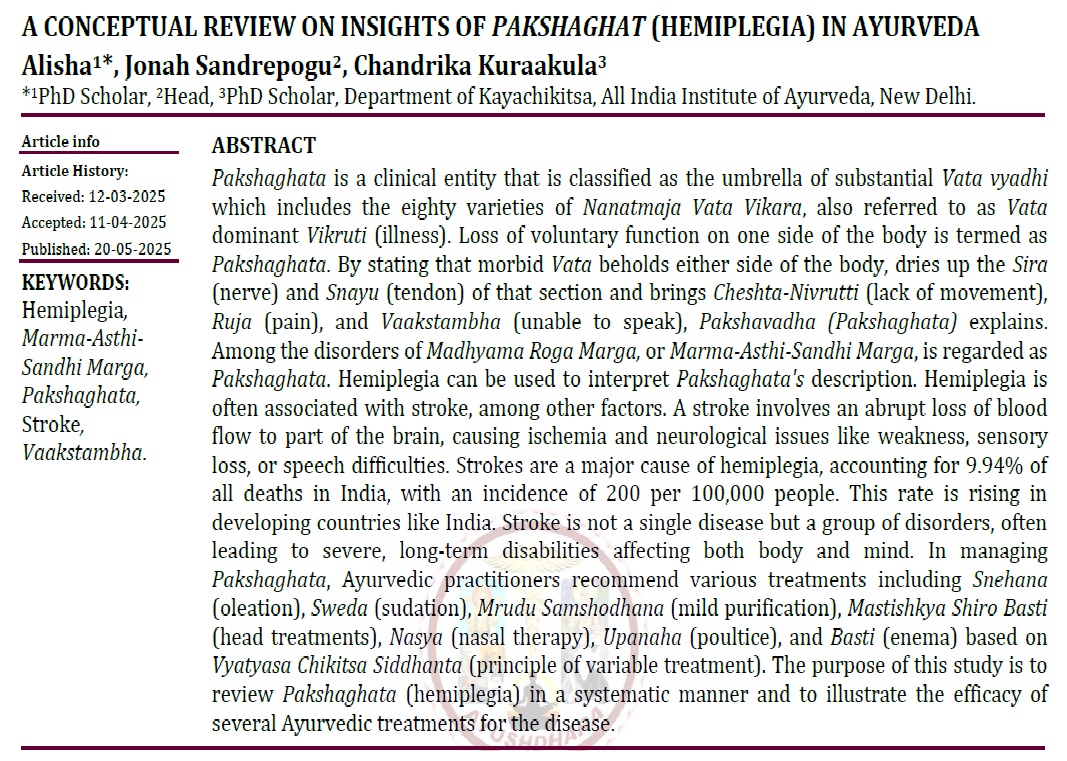A Conceptual Review on Insights of Pakshaghat (Hemiplegia) in Ayurveda
Conceptual Review on Pakshaghat (Hemiplegia)
DOI:
https://doi.org/10.47070/ayushdhara.v12i2.1661Keywords:
Hemiplegia, Marma-Asthi-Sandhi Marga, Pakshaghata, Stroke, VaakstambhaAbstract
Pakshaghata is a clinical entity that is classified as the umbrella of substantial Vata vyadhi which includes the eighty varieties of Nanatmaja Vata Vikara, also referred to as Vata dominant vikruti (illness). Loss of voluntary function on one side of the body is termed as Pakshaghata. By stating that morbid Vata beholds either side of the body, dries up the Sira (Nerve) and Snayu (Tendon) of that section and brings Cheshta-Nivrutti (lack of movement), Ruja (pain), and Vaakstambha (unable to speak), Pakshavadha (Pakshaghata) explains. Among the disorders of Madhyama Roga Marga, or Marma-Asthi-Sandhi Marga, is regarded as Pakshaghata. Hemiplegia can be used to interpret Pakshaghata's description. Hemiplegia is often associated with stroke, among other factors. A stroke involves an abrupt loss of blood flow to part of the brain, causing ischemia and neurological issues like weakness, sensory loss, or speech difficulties. Strokes are a major cause of hemiplegia, accounting for 9.94% of all deaths in India, with an incidence of 200 per 100,000 people. This rate is rising in developing countries like India. Stroke is not a single disease but a group of disorders, often leading to severe, long-term disabilities affecting both body and mind. In managing Pakshaghata, Ayurvedic practitioners recommend various treatments including Snehana (oleation), Sweda (sudation), Mrudu Samshodhana (mild purification), Mastishkya Shiro Basti (head treatments), Nasya (nasal therapy), Upanaha (poultice), and Basti (enema) based on Vyatyasa Chikitsa Siddhanta (principle of variable treatment). The purpose of this study is to review Pakshaghata (hemiplegia) in a systematic manner and to illustrate the efficacy of several Ayurvedic treatments for the disease.
Downloads

Downloads
Published
Issue
Section
License
Copyright (c) 2025 AYUSHDHARA

This work is licensed under a Creative Commons Attribution-NonCommercial-ShareAlike 4.0 International License.


